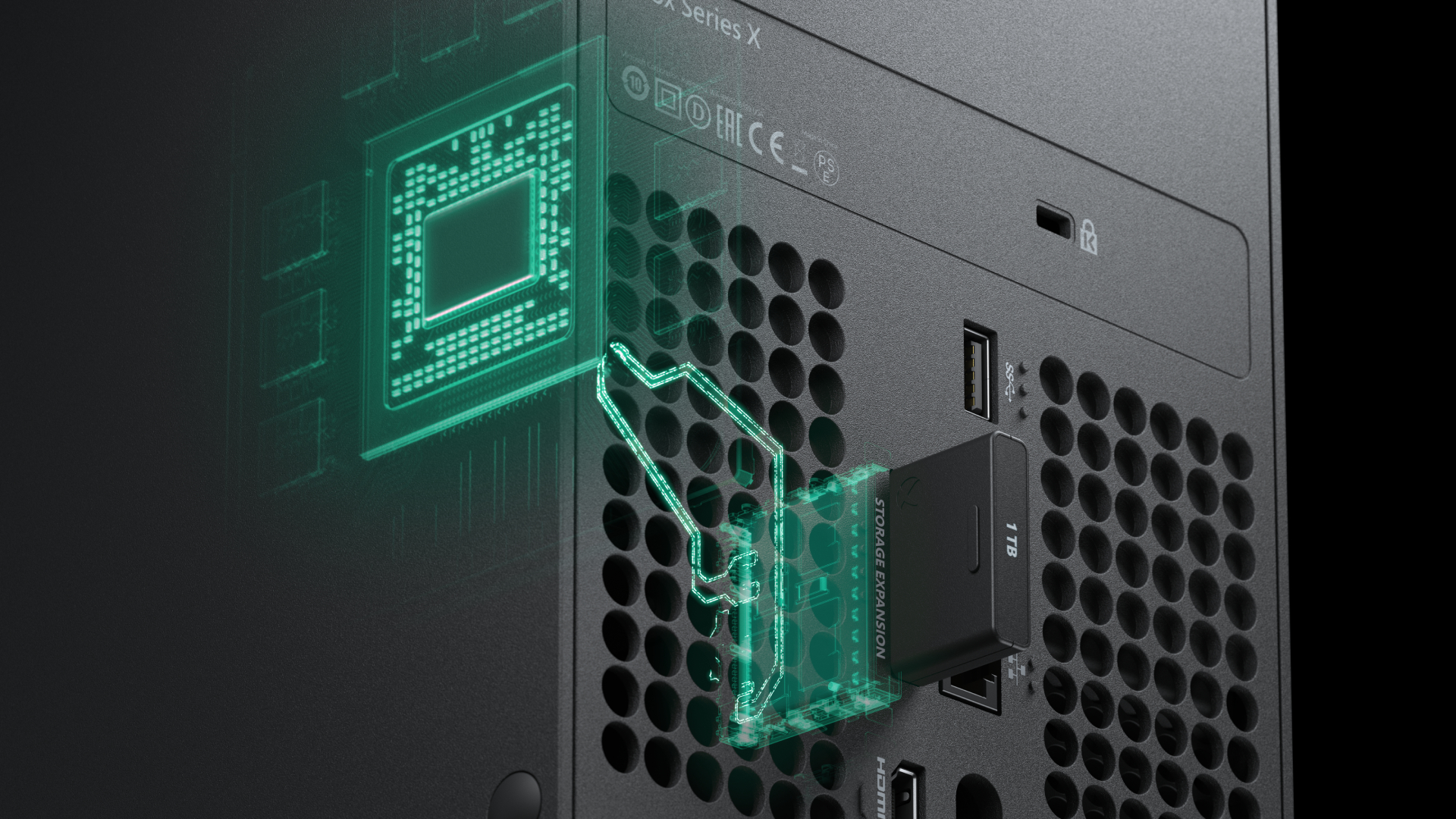Xbox Series X: How Xbox Velocity Architecture works
Microsoft breaks down Xbox Series X's Velocity Architecture

Xbox is doing its Xbox thing and posting a bunch of new Xbox Series X information out of the blue, and this time, we're learning a little bit more about how the Xbox Series X's Velocity Architecture works.
According to the Xbox Wire blog post, the Xbox Velocity Architecture is comprised of four parts: the custom NVME SSD, hardware accelerated decompression blocks, a brand new DirectStorage API layer and Sampler Feedback Streaming (SFS). Here's what each one does and how they'll improve gaming.
- See our The Last of Us Part II review (spoiler-free)
- See the best PC games and best Xbox Game Pass PC games to play now
- Check out the Xbox Series X games and PS5 games confirmed so far
Xbox Velocity Architecture explained
The simplest one to digest is the Xbox Series X's custom 1TB NVME SSD, which delivers 2.4 Gigabytes per second of raw I/O throughput. In plain English, it's over 40 times faster than the throughput of the Xbox One. The SSD was designed for "consistent, sustained performance as opposed to peak performance." So that means you likely won't experienced moments of slow down, but it also won't go as fast as it might be capable of.
The "Hardware Accelerated Decompression" portion will let games become smaller in file size. When games are developed and you get the final size, games like Call of Duty are typically over 100 GB, whereas other graphically-intensive games are under 50 GB. This all has to do with graphic optimization, and textures typically take a large chunk of a game's data. With this new feature, developers can optimize the game to further reduce the game's size. This means shorter download times, more games on your console and possibly faster load times.
It's difficult to define the Xbox Series X's New DirectStorage API, but it's apparently a feature that'll give developers "fine grain control of their I/O operations empowering them to establish multiple I/O queues, prioritization and minimizing I/O latency." What that translates to is the ability to developers to virtually kill loading times, even when fast travelling.
Finally, there's Xbox's Sampler Feedback Streaming (SFS). It's a new innovation that handles how in-game rendering is based. Textures are optimized differently and range in levels of detail and resolution called mipmaps. These vary during rendering based on how close or far away an object is from the player.
Despite using different layers at a time, a developer must load in the whole mip level in memory. So, if the developer only focuses on the lower resolution version because it's far away for a particular scene, the larger resolution version needs to be loaded in as well. However, SFS especially cuts this process down to allow the mip level to load in portions, which saves the amount of data being used at once, so the developer can load in more important things.
Stay in the know with Laptop Mag
Get our in-depth reviews, helpful tips, great deals, and the biggest news stories delivered to your inbox.
These four features effectively create the Xbox Velocity Architecture, which is designed to make games smaller yet increase the content on-screen without sacrificing performance and top it off with the ability for no loading screens. Of course, this is all talk until we get to see it into practice with heavy-duty AAA titles.
Stay tuned for more information about the Xbox Series X as it becomes available in the coming months.

Rami Tabari is the Reviews Editor for Laptop Mag. He reviews every shape and form of a laptop as well as all sorts of cool tech. You can find him sitting at his desk surrounded by a hoarder's dream of laptops, and when he navigates his way out to civilization, you can catch him watching really bad anime or playing some kind of painfully difficult game. He’s the best at every game and he just doesn’t lose. That’s why you’ll occasionally catch his byline attached to the latest Souls-like challenge.
